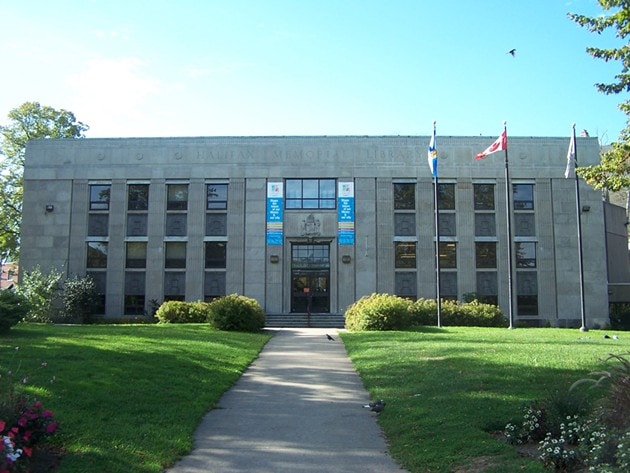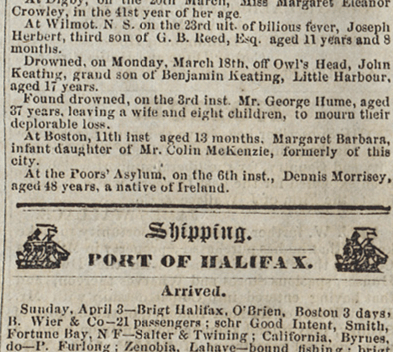
This morning a friend of mine tagged me on a Facebook post by Heritage Nova Scotia. It read:
HRM Council voted today to designate the Memorial Library, thus protecting it and the burial grounds on which it sits. Thanks are due to all those who worked to safeguard this historic site.
As many of you readers already know, the second Halifax Poor House, which was situated on the corner of Queen and Spring Garden Road, (across from the new Halifax Library) used the land on which the old Halifax Library sits (corner of Grafton and Spring Garden) as the ‘potters field’ in which to bury the bodies of ‘inmates’ of the poor house. Those who died in the poor house were buried in unmarked graves, layered in the ground.
Because the town of Halifax was trying to save money, the bodies were not only layered, their graves were very shallow (we don’t want to pay the grave diggers too much!) and the spring frosts would often heave the bodies out of the ground. The stench was awful. People complained. More dirt was brought in to cover up the bodies.

This potters field was used to bury the poor until the 1860s when the Halifax Poor House was moved to the corner of Inglis and Robie (the current site of the Issac Walton Children’s Hospital – the IWK) and the poor were then buried in unmarked graves at the Camp Hill Hospital Cemetery on Robie Street.
After the 1860s, the potters field was turned into “Grafton Park” and in the 1950s, the Halifax Library was established there. It is a lovely place to sit in the summer, enjoying the summer sun, reading a book, talking with friends. I have done it many, many times myself when I lived in the Halifax/Dartmouth area. I had no idea I was eating my Bud’s Spuds fries, working on my university papers, and reading my books on a burial ground.
The work of many people to bring attention to this burial ground of the poor has brought about this progressive decision by the City of Halifax council to preserve the land and, perhaps, even acknowledge the dead who are buried there. Let us hope that we don’t have to fight this battle again in another 10, 20 or 50 years from now.
An excellent podcast was done by two King’s students last November and is located HERE. I highly recommend listening to it to get a very good background and history of the second Halifax Poor House and the burial ground of those who suffered not only in life, but also in death.
Brenda Thompson is the author of A wholesome Horror, Poor Houses in Nova Scotia. ISBN 978-0-9868733-5-5. Available at a few selected bookstores, public libraries, and through the publisher. Her latest book is Finding Fortune, documenting and imagining the life of Rose Fortune. Check out her blog Poor houses in Nova Scotia.
See also: Brenda Thompson: Punishing the poor in Nova Scotia, then and now
See also: Book review: A wholesome Horror, Poor Houses in Nova Scotia
With a special thanks to our generous donors who make publication of the Nova Scotia Advocate possible.
Subscribe to the Nova Scotia Advocate weekly digest and never miss an article again. It’s free!



